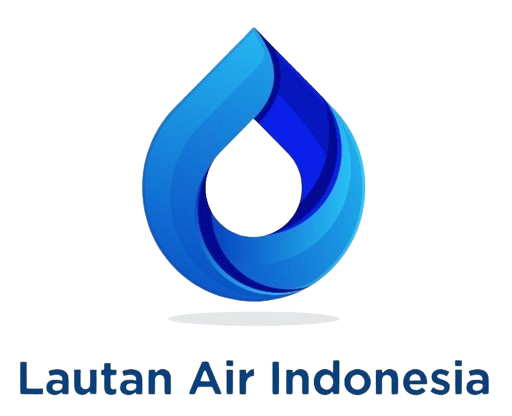In the industrial wastewater treatment process, one of the biggest challenges often faced is the accumulation of fats and oils (Fats, Oils, and Grease—FOG) in the Wastewater Treatment Plant (WWTP) system. This problem not only causes operational disruptions, but also has the potential to cause environmental pollution if not handled properly.
In this article, we will discuss in more depth the serious impacts of fat and oil accumulation, as well as professional solutions that can be applied to overcome it, including services from Lautan Air Indonesia which are ready to help you realize an optimal and sustainable WWTP system.
Fat and Oil Accumulation in WWTP
Liquid waste from various industrial sectors, such as food and beverages, hospitals, hotels, restaurants, and agricultural processing, generally contains high levels of fat and oil. These components tend to float, are difficult to decompose naturally, and can cause disruption to the wastewater treatment system if not addressed from the early stages.
Some common consequences of FOG buildup in the wastewater treatment plant system include:
- Clogging of piping and distribution channels
- Disruption of mechanical equipment such as pumps and aerators
- Reduced efficiency of biological processes due to impaired oxygen transfer
- Emergence of unpleasant odors due to decomposition of organic compounds
- Failure to meet regulatory wastewater quality standards
Operational Risks and Environmental Compliance
If FOG issues are not addressed properly and systematically, various long-term impacts can occur—not only disrupting daily operations, but also bringing legal and reputational consequences for the company.
1. Disruption of Treatment System Performance
Fat and oil form a layer on the surface of wastewater and inhibit the aeration process in the biological unit. This reduces the activity of decomposing microorganisms which ultimately reduces treatment efficiency and worsens effluent quality.
2. Equipment Damage
FOG accumulation causes blockage and corrosion in pumps, pipes, and other mechanical components. The impact is increased maintenance needs and the risk of downtime that disrupts operational continuity.
Read Also: How to Overcome Increased Hardness in Cooling Systems?
3. Failure to Meet Quality Standards
High FOG content contributes to increased BOD, COD, and TSS values in wastewater. Non-compliance with these quality standard parameters can result in administrative sanctions from authorized agencies, including fines or termination of operations.
4. Environmental Pollution
Untreated wastewater has the potential to pollute surrounding water bodies and soil, trigger complaints from the public, and reduce the company’s image as an environmentally responsible entity.
In other words, FOG management is not an additional option, but rather an urgent need that must be part of a sustainable industrial wastewater management strategy.
How to Overcome Fat and Oil Accumulation in WWTP
Effectively managing fat and oil content requires a comprehensive technical approach, from upstream prevention to final processing. The following strategies are practices that have been proven effective in various industrial sectors:
1. Use of a Grease Trap
The application of a grease trap or fat separator system at the initial stage of the waste stream helps prevent FOG from entering the main processing unit. This system can be designed according to the capacity needs and waste characteristics of each industry.
2. Application of FOG Decomposing Microorganisms
The addition of special microorganisms that are able to degrade FOG into compounds that are more easily biodegraded has become an increasingly used solution. This technique supports the natural processing process and minimizes the accumulation of FOG in the system.
3. Optimization of the WWTP System
A thorough evaluation of the WWTP design and performance can open up opportunities for efficiency improvements, such as through the addition of a DAF (Dissolved Air Flotation) unit, improvement of waste load distribution, or integration of an automation-based control system.
4. Selection of the Right Chemicals
The use of chemicals such as coagulants and flocculants that are specifically formulated to handle fatty waste can accelerate the separation and sedimentation process. The selection of materials needs to be based on laboratory tests and jar test results.
5. Periodic Maintenance and Monitoring
Periodic maintenance of the WWTP system—including cleaning of channels, tanks, and mechanical equipment—is an important step in preventing long-term FOG buildup. In addition, operator training and monitoring of wastewater parameters must be carried out routinely.
Read Also: Why Demineralized Water Still Contains Silica
Support Your WWTP Performance with the Right Approach
Managing fat and oil content in a wastewater treatment system is not just a matter of maintaining regulatory compliance, but also part of an effort to maintain the sustainability of industrial operations as a whole. The selection of the right technology, strategy, and technical assistance will have a real impact on WWTP efficiency and environmental sustainability.
Lautan Air Indonesia, with extensive experience in industrial water and wastewater treatment, provides technical support, chemical formulations, and system solutions that can be tailored to your specific industry needs. If your company is facing similar challenges or requires the development of a more reliable wastewater treatment system, our team is ready to discuss further and provide the technical insights needed.
Please contact us for more information or to schedule a technical consultation.


